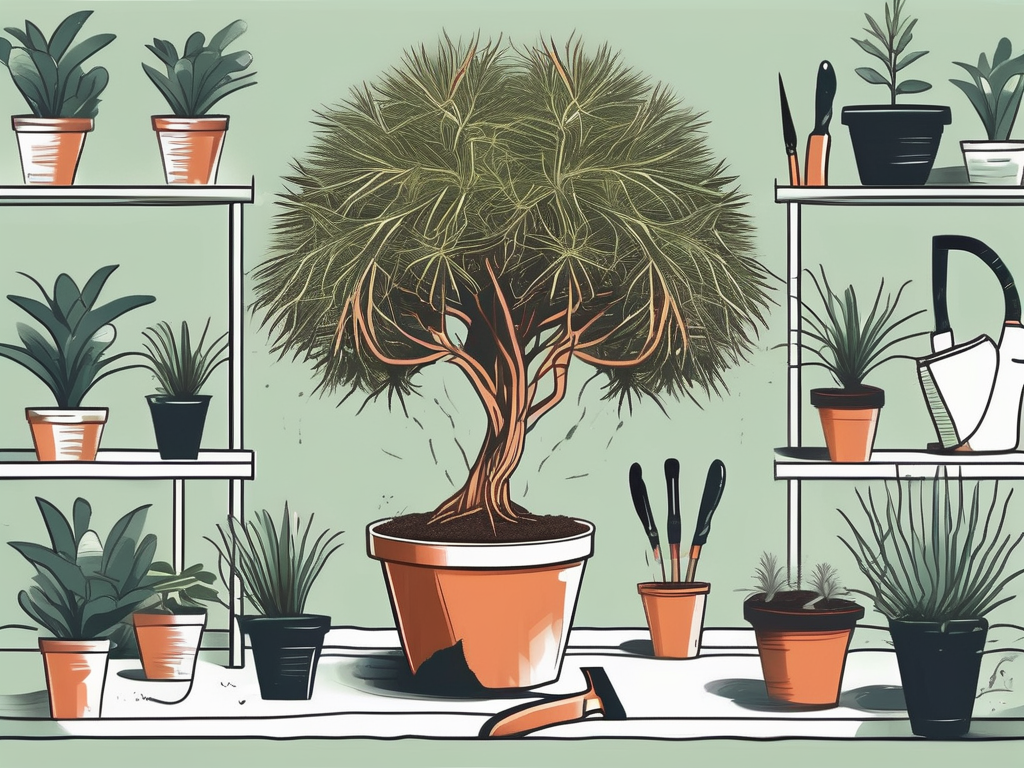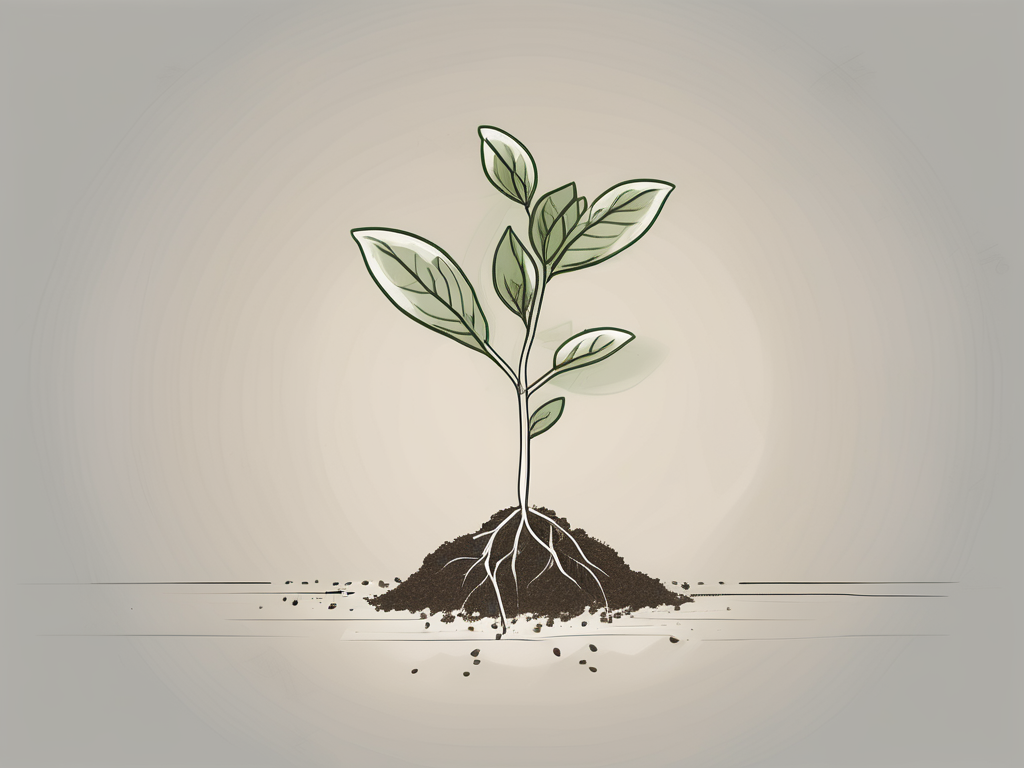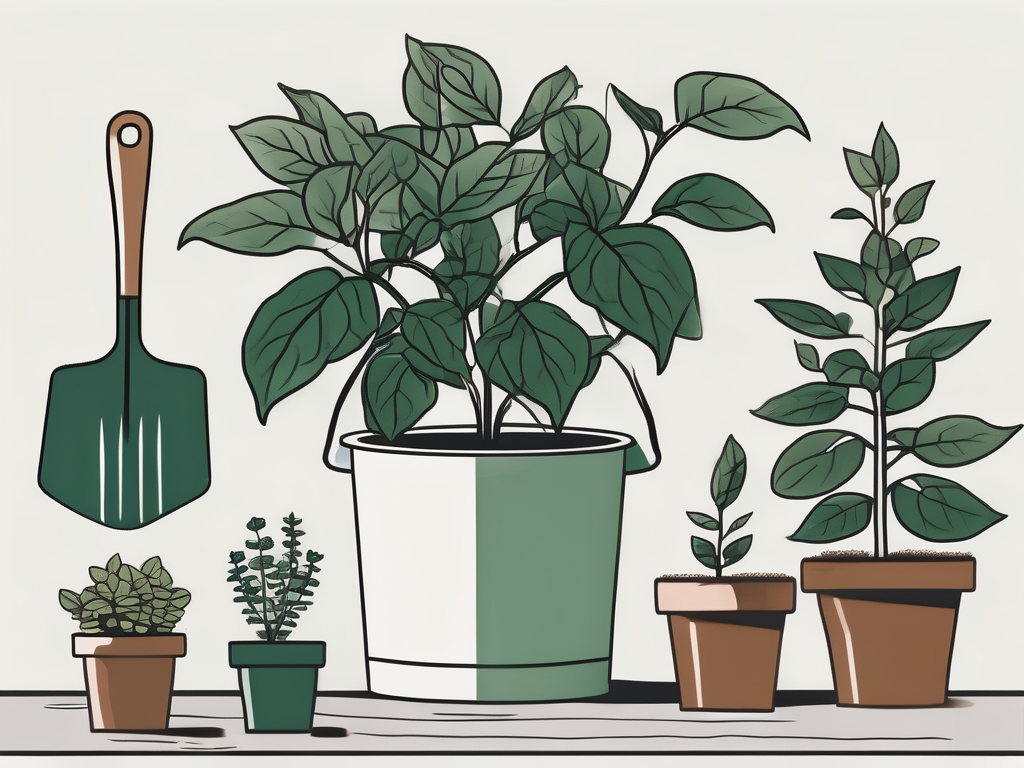
Dragon trees, or Dracaena marginata, are one of those houseplants that can instantly add a touch of elegance and vibrancy to any room. With their tall, slender trunks and spiky, arching leaves, they make for a stunning addition to your indoor garden. However, like any plant, they have their needs, and repotting is a crucial part of caring for them.
This article will guide you through the process of repotting your dragon tree, ensuring it continues to thrive and bring joy to your space. We'll cover everything from choosing the right pot and soil to step-by-step instructions on the repotting process itself. Let's dig into it!
Why Repotting Your Dragon Tree Matters
Understanding why your dragon tree needs repotting can help you appreciate the process. Over time, plants outgrow their pots, and dragon trees are no different. When roots start circling the pot and soil becomes compacted, it can restrict the tree's growth and lead to health issues.
Repotting offers several benefits:
- Room to Grow: A larger pot provides more space for roots to expand, promoting healthier growth.
- Fresh Soil: New soil means fresh nutrients, which can lead to more vibrant foliage.
- Root Health: It allows you to trim away any dead or damaged roots, preventing potential diseases.
Typically, dragon trees need repotting every two to three years. However, if you notice roots poking out from the drainage holes or the plant seems top-heavy and unstable, it's probably time for a change.
Selecting the Right Pot
Choosing the right pot is a critical step in the repotting process. The size, material, and drainage capabilities of the pot can all impact your dragon tree's health. Here's what to keep in mind:
Size Matters
When selecting a new pot, aim for one that's about 2 inches larger in diameter than the current pot. This gives the roots enough room to grow without overwhelming the plant with too much soil, which can retain excess moisture and lead to root rot.
Material Considerations
Pots come in various materials, including plastic, ceramic, and terracotta. Each has its pros and cons. Plastic pots are lightweight and affordable, but they might not be as stable for taller plants. Ceramic pots are stylish and heavy, providing stability, but they can be more expensive. Terracotta pots are breathable, which helps prevent overwatering, but they can dry out more quickly.
Drainage is Crucial
Whatever material you choose, ensure the pot has drainage holes. Without proper drainage, water can pool at the bottom, leading to root rot. If your chosen pot doesn't have holes, consider drilling some or using it as a decorative outer pot with a functional liner inside.
Choosing the Perfect Soil
The soil you use can significantly affect how well your dragon tree adjusts to its new home. Dragon trees prefer a well-draining soil mix that retains some moisture without becoming waterlogged.
You can either purchase a pre-made potting mix designed for indoor plants or create your own blend. Here's a simple DIY mix:
- 2 parts potting soil
- 1 part perlite or pumice for aeration
- 1 part peat moss or coconut coir for moisture retention
This mixture ensures good drainage and provides the necessary nutrients for your plant. If you're using a commercial mix, consider adding extra perlite to improve drainage.
Gathering Your Tools and Materials
Before you start repotting, make sure you have everything you need. Having your tools and materials ready can make the process smoother and less stressful for both you and your plant. Here's what you'll need:
- New Pot: As discussed, choose a pot that's slightly larger than the current one.
- Potting Soil: Either a commercial mix or your DIY blend.
- Gardening Gloves: To protect your hands, especially if you're sensitive to soil or fertilizers.
- Pruning Shears: For trimming any dead or damaged roots.
- Trowel: Useful for scooping soil and loosening the plant from its current pot.
- Watering Can: To water the plant after repotting.
- Old Newspapers or a Tarp: To protect your floor from spills and mess.
With these tools at hand, you'll be well-prepared to give your dragon tree a fresh start.
Step-by-Step Repotting Process
Now that you're prepared, it's time to get your hands dirty. Follow these steps to repot your dragon tree successfully:
Step 1: Prepare the New Pot
Start by placing a layer of fresh soil at the bottom of the new pot. This layer should be deep enough to raise the plant to the desired height while leaving about an inch of space from the top of the pot once the plant is in place.
Step 2: Remove the Plant from its Current Pot
Gently turn the pot on its side and carefully slide the plant out. If it's stuck, gently tap the sides of the pot or use a trowel to loosen the soil around the edges. Be cautious not to pull on the plant itself, as this can damage the roots.
Step 3: Inspect and Trim the Roots
Once the plant is free, examine the roots. Healthy roots should be white or light tan. Trim away any brown, mushy, or overly long roots using pruning shears. This encourages new growth and prevents disease.
Step 4: Position the Plant in the New Pot
Place the plant in the center of the new pot on top of the initial layer of soil. Adjust its position until it's standing upright and at the desired height. Hold it steady as you begin to add more soil around the roots.
Step 5: Fill with Soil
Gradually add soil around the roots, gently pressing down to eliminate air pockets. Be sure not to bury the plant deeper than it was in its original pot. Leave about an inch of space from the top of the pot to allow for watering.
Step 6: Water Thoroughly
After potting, water the plant thoroughly until water drains from the bottom of the pot. This helps settle the soil around the roots and ensures the plant has enough moisture to recover from the shock of repotting.
Caring for Your Dragon Tree Post-Repotting
Once you've completed the repotting process, your dragon tree will need a little extra care to adjust to its new home. Here are some tips to help it settle in:
- Watering: Keep an eye on the soil moisture. The plant might need more frequent watering initially, but avoid overwatering. Allow the top inch of soil to dry out between waterings.
- Light: Place your plant in a spot with bright, indirect light. Direct sunlight can scorch the leaves, while too little light can slow growth.
- Humidity: Dragon trees prefer moderate humidity. Consider misting the leaves occasionally or placing a humidity tray nearby.
- Fertilizing: Hold off on fertilizing for a month or two post-repotting, as the new soil should have enough nutrients. After that, a balanced liquid fertilizer every two months during the growing season should suffice.
With proper care, your dragon tree will bounce back and continue to thrive in its fresh environment.
Signs Your Dragon Tree Needs Repotting
While the general guideline is to repot every two to three years, your plant might show signs that it needs a new pot sooner. Keep an eye out for these indicators:
- Roots Emerging: If you see roots poking out from the drainage holes, it's a signal that the plant is root-bound.
- Stunted Growth: If your dragon tree hasn't shown much growth over the growing season, it might be due to limited root space.
- Water Drains Quickly: If water seems to rush through the pot without soaking the soil, it could be a sign of compacted soil or a root-bound plant.
- Top-Heavy Plant: If the plant seems unstable or top-heavy, it might need a larger pot for better support.
Recognizing these signs early can prevent stress on the plant and ensure continued healthy growth.
Common Mistakes to Avoid
Repotting might seem straightforward, but there are a few common pitfalls to watch out for. Avoiding these mistakes can save you a lot of trouble down the line:
- Over-Potting: Choosing a pot that's too large can lead to waterlogged soil. Stick to pots that are just slightly larger than the current one.
- Neglecting Drainage: Always ensure your pot has drainage holes to prevent water from accumulating at the bottom.
- Using Garden Soil: Garden soil is often too dense for potted plants, leading to poor drainage and compacted roots. Stick to a suitable potting mix.
- Repotting at the Wrong Time: Ideally, repot during the growing season (spring or early summer) when the plant can recover more quickly.
Avoiding these common pitfalls can make the repotting process much smoother and more beneficial for your dragon tree.
Creating a Beautiful Space with Dragon Trees
Dragon trees are not just about function; they're also about form. Incorporating them into your home decor can elevate the aesthetic of any space. Here are some ways to style your dragon tree:
Choosing the Right Spot
Thanks to their tall, slender shape, dragon trees are perfect for filling corners or acting as a focal point in a room. Consider placing them in:
- Living room corners for a pop of green
- Near entryways to welcome guests with natural beauty
- In a home office to create a calming workspace
Pairing with Other Plants
Dragon trees pair well with other plants. Consider combining them with smaller, bushy plants for contrast or placing them alongside trailing plants for a dynamic look.
Pot Choices
The pot you choose can complement your decor. Opt for a sleek, modern pot for a contemporary look or a rustic terracotta pot for a more natural, earthy vibe.
With a bit of creativity, dragon trees can be a stunning addition to your home, complementing your style and enhancing your living space.
Final Thoughts
Repotting your dragon tree might seem like a big task, but it's an essential part of keeping your plant healthy and happy. From selecting the right pot to ensuring the perfect soil mix, each step contributes to your tree's well-being.
At Cafe Planta, we're passionate about helping you care for your plants. Whether you're looking for new additions to your collection or need advice on plant care, we're here to help. Feel free to email us or send us a DM on Instagram. Let's grow together!












